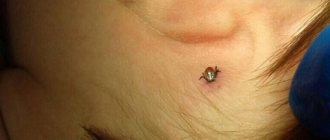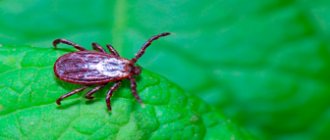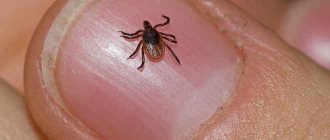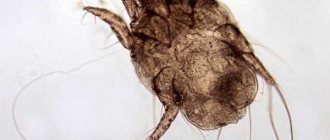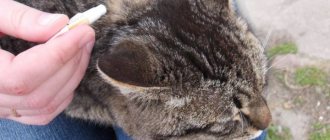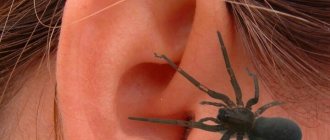Springtime brings with it a charge of positive emotions; nature awakens in all its diversity, including the world of insects. Not all of them are friendly to humans, and some are quite dangerous. Some of them are not easy to get rid of. For example, you need to know exactly how to remove a tick and not harm your health or the well-being of a loved one who has become the target of the parasite’s aggression. There are several proven methods for removing the pest. It is better not to touch it with your fingers, but to use special devices for removing them, which can easily fit in a pocket or small compartment of a backpack.
If you need quick and effective treatment of an area against ticks, we recommend contacting EcoSept!
How a tick bites
There are more than 54 thousand species of ticks in nature. About 114 of them are already fossils, but the remaining ones are enough to follow basic safety rules when walking in nature. Although only the encephalitis tick is dangerous, it is almost impossible to distinguish it from other species without the proper knowledge and equipment.
Often people panic when they see this insect on their skin and, not knowing how to pull out the tick correctly, try to do it in any available way. This is not only useless, but also dangerous. Any mechanical or chemical effect frightens the insect, which leads to the injection of infected saliva under the skin. And if during removal the head or proboscis comes off, then inflammation is not far away.
It is worth considering that blood-sucking parasites, to which this group of insects belongs, have a special oral apparatus, since they feed only on one substance and are not allowed pickles.
What happens if you don't take out the leftovers?
Doctors have differing opinions about the health hazards that such a situation may entail. Most experts believe that it is impossible to catch an infection from insect particles remaining in the body, but they can cause suppuration or an inflammatory process, like any other foreign body, so it is better to get rid .
IMPORTANT! To prevent rupture of the parasite's body when removing it, you need to act extremely carefully - do not try to sharply pull out the tick, but slightly pull the body upward, while simultaneously performing rotational movements (the same as when unscrewing a cap from a bottle).
Where to look for ticks on the body
For an ectoparasite, saturation with blood is a necessary condition for the further development of the body; the entire system is subordinated to the function of biting and holding on to the body of the victim. Among the adaptation mechanisms, the main one is the search for a power source. Ticks can smell skin, sweat, and body heat from several tens of meters away. At the same time, the parasite very carefully selects hunting sites, prey and the place of attachment to it, preferring the neck, elbow bends, armpits and scalp. It is there that the skin is more delicate, and the chances of detecting and destroying the pest are several times less.
Structural features of the tick's nutritional organs
Once it has attached itself to an object with sharp claws at the ends of its legs, the tick bites into the victim. The oral apparatus is very complex in structure, performing several functions at once, providing blood flow and at the same time additionally fixing the ectoparasite on the skin of a person or animal. That is why difficulties arise with how to get a tick from a person without damaging the insect itself and without provoking the release of its saliva. The proboscis is covered with spines; they prevent the pest from being easily removed by getting stuck in the skin. You cannot try to pull out the parasite with a jerk, this is useless and dangerous, especially since during the feeding process not only the proboscis and the first pair of chelicerae are immersed in the epidermis, but also the head of the blood-sucking insect, for which purpose the upper stratum corneum is first cut through.
Important: the mite is able to regulate the depth of penetration of the proboscis into the skin. The deeper it goes, the more difficult it is to figure out how to remove a tick from a person on your own, without a threat to health, since the chance of developing inflammatory processes increases.
How to know if the parasite has not been completely removed
After getting on the skin, the tick chooses a convenient place for itself for several hours (most often in the groin or under the arms), after which it begins to drink blood.
The parasite is absorbed relatively shallowly - the back part remains on the surface, which looks like a small mole, but the difficulty lies in the fact that it firmly clings to the soft tissue with its proboscis and resists removal.
After removing the insect, you need to carefully examine its body - it must be intact, with all segments and head. Only the number of legs does not matter - perhaps the tick lost them before attaching itself to the victim. Next, you should examine the place where the parasite was extracted, and it is best to do this with a magnifying glass. The wound must be absolutely clean , without foreign objects - a few drops of blood that may appear on the surface of the skin are considered normal. If black dots or inclusions are visible in the bite area, it means that the proboscis or head of the tick remains under the skin.
Signs of a bite and why it is dangerous
Blood-sucking insects of the parasitic type are very leisurely; they know that as soon as contact is found with the carrier, the percentage that they will not be able to bite is negligible. Protective coloring and small size make the pest almost invisible on dark and colorful clothing. From the moment of preparation to direct attachment to the skin, it can take about 20 minutes.
At the stage of blood sucking, anticoagulants enter the host tissue, preventing the process of blood clotting and the parasite can feed for a long time. They act like a pain reliever and the person does not feel discomfort. Removing a tick at the initial stage, before the bite, is possible with care and a certain amount of luck. Even while the ectoparasite is feeding, it can only be noticed visually upon careful examination.
Only when digestive enzymes of saliva are injected into the wound and partial dissolution of the surrounding tissue begins, local inflammation develops, itching, a burning sensation appears, and the temperature may rise. Externally, this is expressed in redness, swelling, and compaction, which can be easily felt with your fingers.
The danger lies not in the bite itself, but in the saliva of the pest, along with which the pathogens of Lyme disease and tick-borne encephalitis can penetrate. They are severe and can lead to disability. The most dangerous are ixodid forest ticks and the meadow variety.
What to do if you are bitten by a tick
It is worth considering that the time required for saturation depends on the sex and stage of development of the insect. Nymphs need 2-3 days, females can parasitize on the body for up to 7 days, and several hours are enough for sexually mature males. A well-fed tick increases in size up to 25 times and falls off the skin on its own. This does not mean that you need to sit and meekly wait until the parasite deigns to leave on good terms. If a pest is detected, measures must be taken immediately. The algorithm for how to get a tick at home is quite simple.
- Determine the location of the lesion. This can be done by visual signs and increased body temperature at the site of the bite, even if the insect itself is so small that it is almost invisible. Once you understand where the parasite is stuck, you can choose how to get it out and whether it’s worth doing it yourself
- Choose one of the ways to remove a tick , and also evaluate the degree of success of the procedure. It is worth remembering that if the place is hard to reach, then there is a risk of damaging the insect’s body and thereby provoking the release of saliva under the human skin.
- When it is clear that you cannot cope on your own, you need to collect documents and go to the nearest emergency room. You will need a passport and compulsory medical insurance policy. Removal of blood-sucking parasites is free, but you will have to wait in line.
- The decision whether to submit an insect to a laboratory to determine its species or not remains with the victim. If you want to make sure that the individual is not encephalitic, it is taken to specialists, but the study will already be paid for.
- If the pest has spent enough time on the skin, it is recommended that you get a prescription from your doctor for an antibiotic that acts on Borrelia, the causative agent of Lyme disease. This is also left to the discretion of the victim.
When contacting a medical facility in the first 3 days after a bite, patients are provided with emergency free chemoprophylaxis, except for pregnant women and people for whom antibiotics are contraindicated. They are given a referral to conduct a free laboratory test of the ixodid tick to rule out the risk of infection.
Tick extractor
To remove ticks, use both special tools and improvised means. Improvised means such as tweezers, thread or a syringe will not guarantee safe removal of the tick, and moreover, they can only aggravate the situation. Also, never try to pull out a tick with your bare hands - the tick can be easily crushed, and then viral particles can easily penetrate into the wound. Use KleschKart effectively and safely:
- KleschKart is a plastic card with a special groove. The groove must be placed under the body of the attached tick, without pressure or effort, move the card forward and remove the parasite; as a result of this manipulation, you will get it alive and intact.
- The kit includes an antiseptic wipe for treating the bite site and a test tube for the tick (to deliver the parasite to the laboratory for analysis). The KleshKart easily fits into a wallet, business card holder or pocket.
During tick season, we are all at risk. a Tick Card with you , inspect your body after walks. Take care of yourself!
How to remove a tick
In principle, you can remove the bloodsucker yourself or go to a doctor at an emergency room or private clinic. Among the options for how to get rid of a tick on your own, there are quite practical and downright strange, so you should approach the issue wisely. First of all, you need to remember that pulling, trying to crush or pouring alcohol, oil, or cologne is useless and risky. When subjected to rough mechanical action or an attempt to block its access to air, the insect reflexively secretes saliva, which may contain pathogens of dangerous diseases. The remaining fragments of the proboscis provoke inflammation and will have to be treated comprehensively. proven and relatively safe ways to remove a tick .
Tweezers for removing ticks
The best option. There is a specially designed very convenient model that anyone can use without any training. It takes into account all the nuances, including the fact that you cannot crush or pull the insect, scare it or provoke it to release saliva. Therefore, there are no pincer-like elements there. Tweezers for ticks https://klinver.by/ are convenient to use even for bites in hard-to-reach places. It is simply brought with a fork under the insect’s body, fixed and carefully unscrewed, like a screw. Thus, there is no pressure, the proboscis does not have time to catch on the skin, and the pest is pulled out unharmed.
The convenient size and shape will allow you to easily grab the parasite, and the bright color eliminates the possibility of losing the tweezers. The set includes 2 devices of different sizes; they are accompanied by a disposable test tube for the extracted tick with a ground-in stopper. Traveling along the spring trails with such a device is much safer; you can quickly help yourself and your loved ones.
Tape or Band-Aid
Bloodsuckers are securely attached to the skin; their proboscis has reverse serrations that make it difficult to pull it out with your fingers. However, you can use a piece of adhesive tape of any kind, but it must adhere well to the skin. A strip is cut and glued to the affected area. There is no need to press down hard so as not to crush the insect. One corner is left free. Then, with a sharp movement, the patch is removed along with the parasite stuck to it.
Regular thread
Any long enough piece of thread will do. It should be thin and durable. A loop is knitted from it, placed on the tick as close to the skin as possible, without touching the abdomen, and then tightened and smoothly rises up. The secret is to pull strictly vertically, without allowing deviations to the sides.
Tweezers
Experienced travelers will definitely have this useful item in their travel pharmacy. It is needed in many situations. Almost anyone can cope with the task of how to remove a tick with tweezers The main thing is to carefully grab it as close to your head as possible and remember not to press. You will have to pull very smoothly and carefully, and immediately place the extracted specimen in a container of water and securely close it with a lid or stopper. The bite site is treated with any antiseptic.
If the tick's proboscis remains in the wound
Many people wonder what to do if the entire tick could not be removed. It depends on the size of the remaining part. Removing the head is quite simple if you use special methods. But the proboscis - a small thin appendage with which the tick sucks blood - is almost impossible to remove if it is the only thing left in the skin.
To avoid complications, after detecting a proboscis in the skin, you should immediately go to the doctor. Under no circumstances should you try to widen the wound, pick at it, comb it, or cut out a piece of fabric along with the proboscis. All this can lead to both bacterial infection and the spread of the viral pathogen from the remaining part of the parasite.
The best option, if the proboscis has not gone too deep and is located almost perpendicular to the skin, is to use a needle. This instrument must be made of stainless material, otherwise there is a risk of blood poisoning. The needle should be heated - this will remove pathogenic microorganisms. It is also advisable to treat it with alcohol. After this, the instrument is slowly inserted under the skin. They need to pry up the proboscis and carefully pull it out, if possible without widening the bite wound.
The proboscis often remains in the human body, but he does not notice it because the particle is too small. If you are sure that the proboscis is stuck in the skin, but you cannot see it, you can use a dampened piece of cloth. By thoroughly rubbing the wound with it (but without scratching), you can cause blood to drain from the affected area. The skin will lighten slightly and the foreign object will be easier to spot. If the proboscis is close enough to the epidermis, it can be removed with a needle. Otherwise, you urgently need to go to the first aid station.
If the proboscis cannot be removed, it is important to treat the wound with a soap solution before visiting the doctor, then dry it and apply iodine.
What to do with a removed tick
Throwing out a parasite is reckless, and squeezing is useless. Collected ticks are burned along with a piece of cloth, napkin or cloth, if they were purposefully collected on the territory. When an insect is removed from human skin, it is recommended that the individual be sent to a laboratory. This will make it possible to accurately determine whether she is a carrier of a dangerous disease and which one. Information is necessary for further monitoring of well-being and tracking the most striking symptoms during the period of possible incubation, since treatment is effective precisely at the first manifestations of the disease.
For preventive purposes, immunoglobulin or doxycycline is prescribed. The doctor makes the appointment, he also writes the prescription and observes the patient. If the study shows that the tick is not a carrier of any pathogen, then emergency chemoprophylaxis is not carried out.
Before the spring season, it is worth purchasing a device in advance for the safe removal of ticks and meeting a possible aggressor in full combat readiness.
Caring for your dog after tick removal
If you manage to rid your dog of ticks yourself, you need to:
- Inspect the wound to see if the arthropod's head remains inside. If so, the area needs to be disinfected and the residue removed with tweezers. If this is not done, there is a risk that an inflammatory process will begin. In this case, it is inconvenient to work with a needle; you can pick the wound too much.
- If the head cannot be removed, the wound is regularly lubricated with iodine. The dog’s body itself will reject the foreign body after some time.
- If the wound is clean, it is treated with any antiseptic: brilliant green, iodine, peroxide, alcohol.
After the parasite is removed, there is no point in immediately taking the dog to the veterinary clinic and removing the tick from the dog for testing. On the first day, protozoa are not detected in the peripheral blood. Therefore, the result of the analysis will be negative, but also false. Accurate results appear within 3-4 days. And even with a negative indicator, a repeat analysis is done on days 5-7.
It is also impossible to determine from the ectoparasite itself whether it is a carrier or not. An infected tick does not look different from a normal tick. Even if he is a carrier, it is not a fact that he was the one who managed to infect the dog.
Females drink the blood of animals. Having sucked, they do this for 5-7 days, inflate and become like a large dark pearl. Then the female falls off her body - she needs to lay eggs in a secluded place to continue the race. Therefore, if a small, newly attached tick is found and the dog develops symptoms of the disease, then the culprit may not be this one, but a completely different specimen that has fallen off long ago. After all, symptoms of infection can appear from 3 to 21 days after the bite. The owner only has to monitor the pet and measure the temperature up to 5 times a day.
